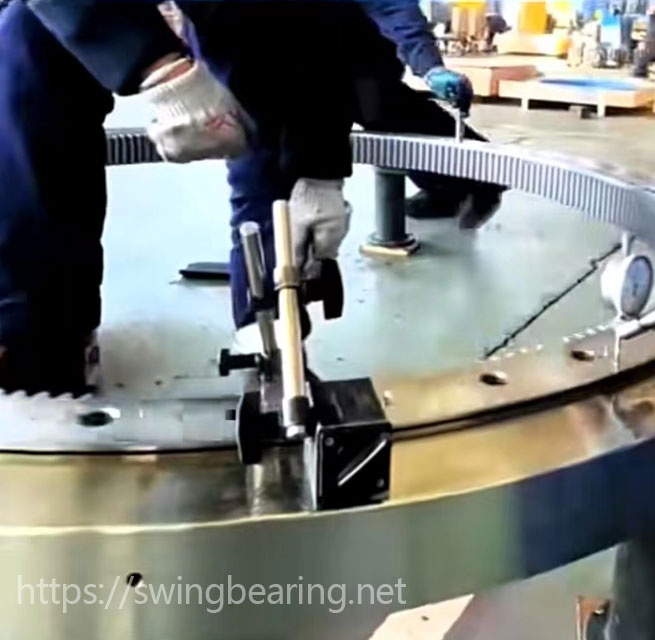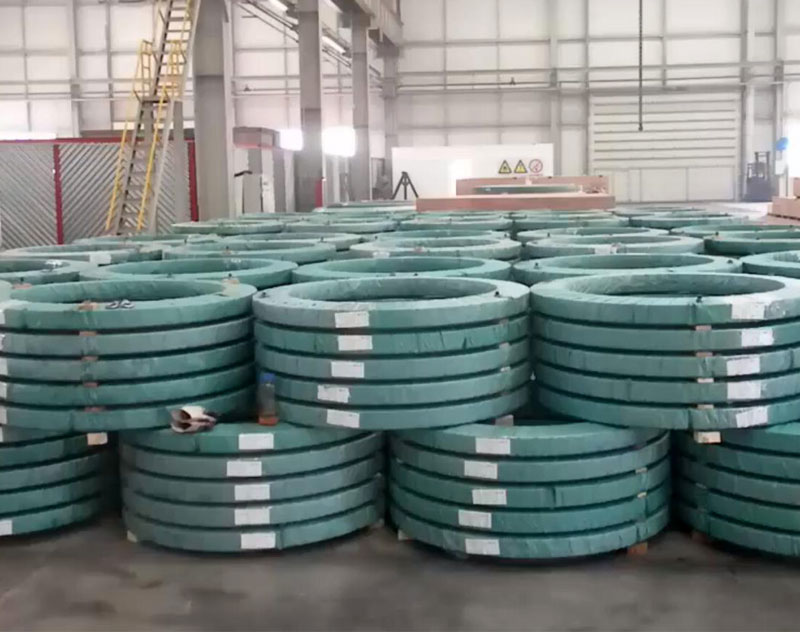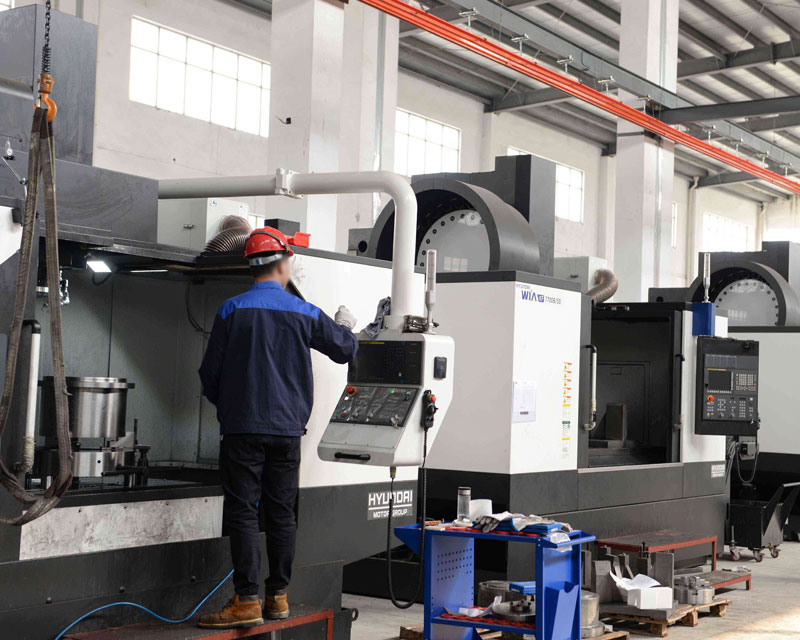
Slewing bearings are vital components in various types of engineering machinery, construction equipment, and heavy-duty machinery. These bearings support rotating parts and are subjected to significant stress and motion during operation. To ensure their performance and reliability, the slewing bearing rocking test is a crucial method. This test simulates the conditions slewing bearings face in real-world applications, verifying their stability and durability over long-term use. This article provides a detailed introduction to the slewing bearing rocking test, including specific data and procedures.
The slewing bearing rocking test is designed to replicate the operational stresses and motions that slewing bearings endure. By doing so, it assesses their performance, stability, and durability, ensuring they can withstand prolonged usage in demanding environments. This test is essential for detecting potential issues early and guaranteeing the safe operation of machinery.
Before initiating the rocking test, it is imperative to ensure that the slewing bearing is correctly installed and securely fastened. Any installation errors can skew the test results and lead to inaccurate assessments. Use precise tools and follow manufacturer guidelines to achieve the correct setup.
Gather all necessary testing equipment and tools, including load application devices, rocking motion generators, and data collection instruments. Verify that all equipment is in proper working condition to ensure accurate and reliable test results.

Apply a predetermined load to the slewing bearing that accurately reflects the conditions it would encounter during actual operation. For instance, if the bearing is used in a construction crane, the load should simulate the weight and forces exerted by the crane’s arm and payload.
Ensure the load’s magnitude and distribution match real-world conditions. Use calibrated weights and precise measurement tools to achieve the desired load specifications, and document these parameters for analysis.
Generate a rocking motion to simulate the movement experienced by the slewing bearing during operation. This can be achieved manually or using specially designed automated equipment. Automated systems are preferable for consistency and accuracy.
Adjust the amplitude and frequency of the rocking motion to replicate the operational environment. For example, a slewing bearing in a wind turbine would experience different motion characteristics compared to one in an excavator. Measure and document these settings meticulously.
During the test, closely monitor the performance of the vrtljivi ležaj. Use high-resolution cameras and sensors to detect any abnormal noises, vibrations, or movements. Pay attention to any signs indicating potential issues, such as irregular wear patterns or unusual heating.
Employ data logging systems to continuously record performance metrics. This data provides a comprehensive overview of the bearing’s behavior under test conditions and is crucial for subsequent analysis.
Conduct the test for a sufficient duration to ensure a thorough evaluation of the slewing bearing’s performance. Typically, the test duration ranges from several hours to several days, depending on the application and the bearing’s operational conditions.
For bearings expected to endure extreme conditions or prolonged usage, consider extending the test duration. This helps in identifying long-term performance issues that might not be apparent in shorter tests.
During the test, collect relevant data, including the magnitude of the applied load, the amplitude and frequency of the rocking motion, and any abnormalities observed in the bearing’s performance. Use precise instruments and software to ensure data accuracy.
After completing the test, analyze the collected data to assess the slewing bearing’s performance. Use statistical and graphical analysis tools to identify trends, anomalies, and areas for improvement. Compare the results against baseline performance metrics and manufacturer specifications.
The slewing bearing rocking test is a critical method for assessing the quality and reliability of slewing bearings. By simulating real-world conditions, this test helps in identifying potential issues early, ensuring the safe and efficient operation of machinery. Proper preparation, accurate load application, and detailed data analysis are essential for achieving reliable test results.

Q: How often should the slewing bearing rocking test be conducted?
A: The frequency of the test depends on the application and operational conditions. For high-stress applications, it is advisable to conduct the test annually or whenever there are signs of performance degradation.
Q: What specific data should be collected during the rocking test?
A: Key data points include the magnitude of the applied load, amplitude and frequency of the rocking motion, abnormal noises, vibrations, and any signs of wear or damage.
Q: How can I ensure accurate load application during the test?
A: Use calibrated weights and precise measurement tools. Follow manufacturer guidelines and document all load specifications for accurate analysis.
Q: What are common signs of potential issues during the rocking test?
A: Common signs include unusual noises, irregular vibrations, visible wear patterns, and unexpected heating. These indicators suggest possible problems that need further investigation.
Q: Why is the duration of the rocking test important?
A: The duration of the test ensures that the bearing’s performance under various conditions is thoroughly evaluated. Extended testing helps identify long-term issues that might not be apparent in shorter tests.
By adhering to these guidelines and conducting thorough slewing bearing rocking tests, operators can ensure the reliability and longevity of their machinery, ultimately leading to safer and more efficient operations.